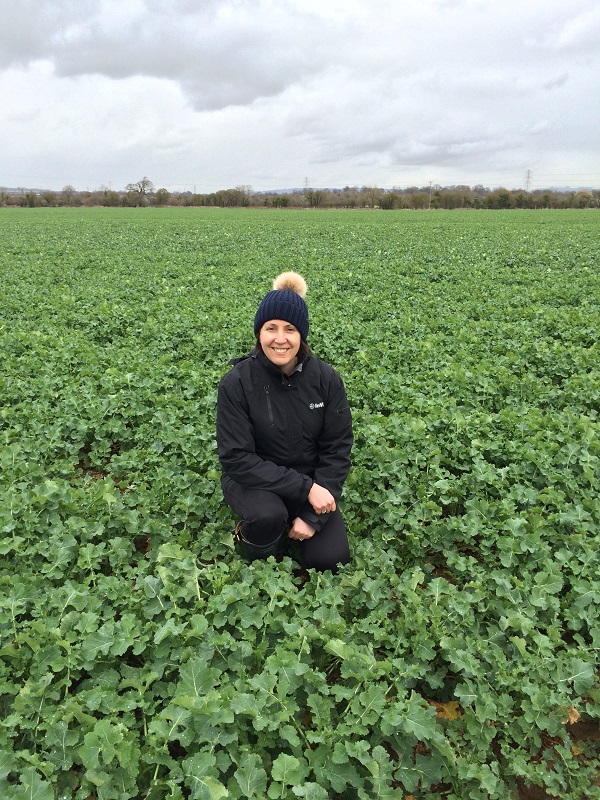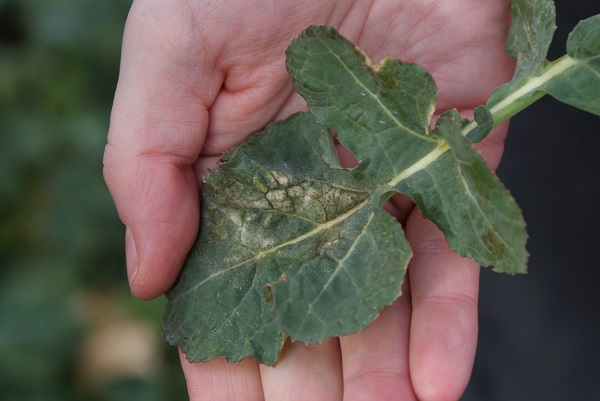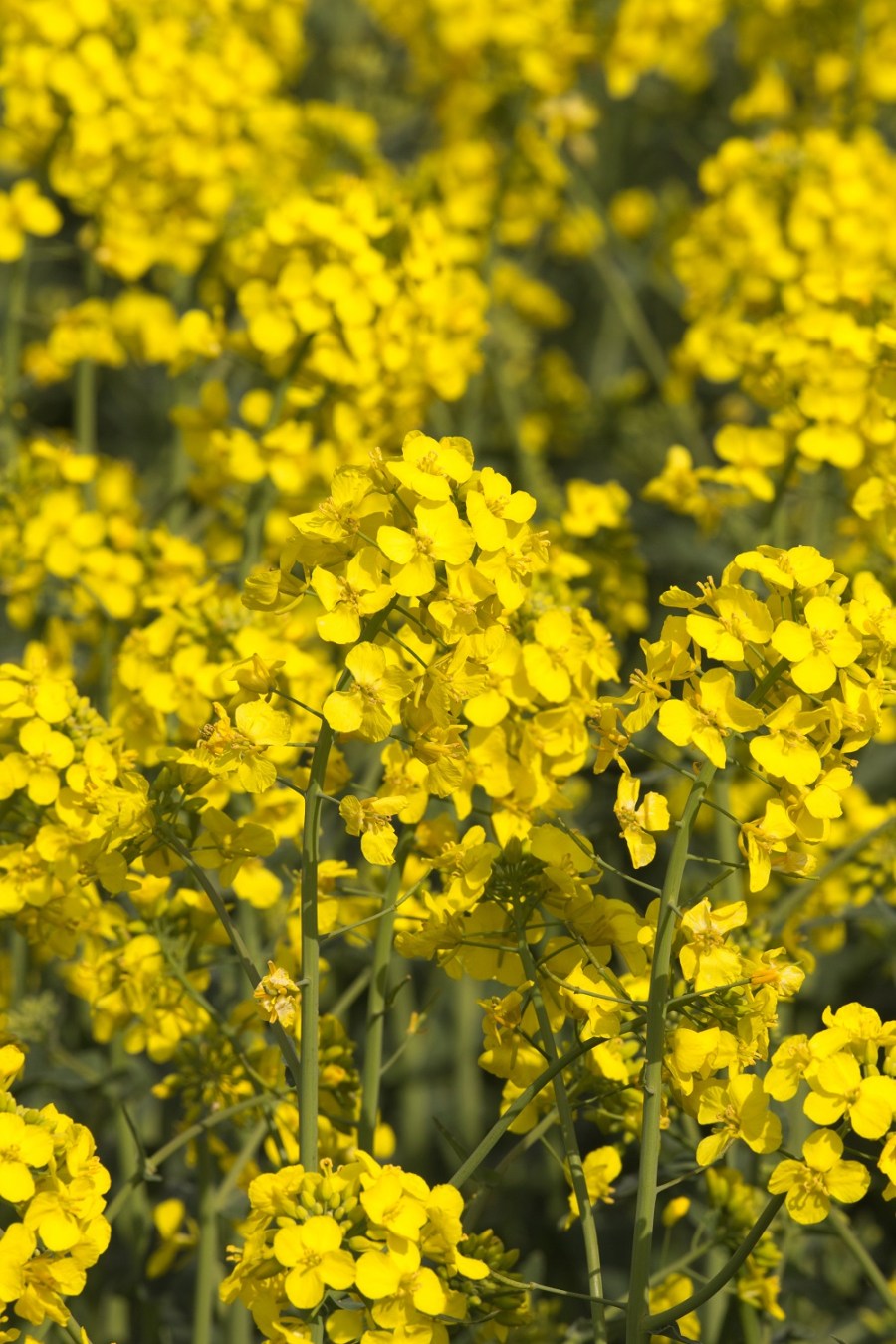Noted for the way it springs out of the ground in autumn, Bayer’s latest oilseed rape offering will likely spring to the attention of many growers. CPM finds out more.
I think InV1035 looks to be the next step up from Harper.
By Melanie Jenkins
Growers looking for a variety that’ll jump out of the ground in the autumn, mature early, with good disease scores and significant gross output, are unlikely to be disappointed with Bayer’s most recent InVigor variety, InV1035.
InV1035 came through National List testing last year, demonstrating exceptional autumn vigour, with good disease and lodging scores, says Sarah Middleton, Bayer’s campaign manager for seeds and traits. “The variety also has early maturity and pod-shatter tolerance, providing early entry into wheat and protection for growers if timings aren’t spot on.”
The vigour of the variety really made it stand out in Bayer’s trials, says Sarah Middleton. “We picked it out as being the most vigorous variety in our pipeline as well as having a similar or higher yield than other leading varieties – so we thought it would be a good fit for the

InV1035 was picked out as being the most vigorous variety in the Bayer pipeline, says Sarah Middleton.
market and a successor to Harper.” Agrii was so impressed by the variety that it secured exclusive distribution for it.
Achieving a seed yield of 118% against the trial mean and an oil content of 45.2% in Bayer’s trials, the gross output of 118% is equally dependent on seed yield and oil, she explains.
Bayer had hoped InV1035 would be put forward as an AHDB candidate for the Recommended List, but it didn’t make the yield targets in trials. “The plant populations they look to achieve in AHDB trials with hybrids are too high, creating too much competition, and the canopy can’t cope,” says Sarah Middleton. Many of the market-leading hybrids have also not made it onto the RL and yet many of top conventional varieties do make the list, she explains.
David Leaper, technical seed manager at Agrii, agrees that hybrids usually require different seed rates to conventionals to achieve their full yield potential. “Hybrids are typically planted at a maximum of 50 seeds/m², and if they’re drilled at a higher seed rate, they’re not necessarily going to perform. The official system of testing doesn’t therefore reflect hybrids’ capabilities or their performance on farm.”

David Leaper reckons the official system of testing doesn’t reflect hybrids’ capabilities or their performance on farm.
In Bayer’s own trials, the seed rate has been as low as 20-30 seeds/m², says Sarah Middleton. “However, farmers need to have confidence they can achieve the right plant population, and so should plant according to each situation,” she advises. “You wouldn’t want to achieve any more than 50 plants/m².” InV1035 should deliver a good yield down as low as 30 plants/m², she adds.
The disease resistance of InV1035 offers a good all round package for growers, scoring an 8 for phoma stem canker with the extra benefit of the RLM7 resistance gene, a 7 for light leaf spot, and an 8 for both lodging and stem stiffness. The variety also has pod-shatter tolerance, which Sarah Middleton claims is as good as other hybrids with pod-shatter genetics.
Its LLS resistance is of particular note. Although not as prevalent in the UK early on this spring, farmers are seeing higher levels now, says Jim Carswell, research and development manager at Agrii. “Differences between varieties are quite evident in untreated trials.”
Despite the robust genetic resistance, he advises keeping an eye on LLS and says the first fungicide should be applied at the end of Oct or early Nov, followed by another in Feb and then a Sclerotinia spray after that. “Make sure it has enough early boron to help avoid any stem cracking and splitting,” he adds.
On Agrii demo farms, InV1035 had a green area index of 1.15 in Jan this year, compared with another popular hybrid variety at 0.89, says Jim Carswell. “We’re now waiting to see how it performs at harvest in terms of yield and oil content.”

Bayer’s assessments rate InV1035 with a score of 7 on light leaf spot.
He doesn’t think InV1035 will require any autumn growth regulation, unless it’s sown early on particularly fertile soils. “It may need a PGR in spring to prevent the canopy from getting too large – products such as Caryx or Toprex could be used around mid to the end of March if needed.”
InV1035 is suited to all regions but doesn’t want to be sown too early as it’s so vigorous, advises Sarah Middleton. “It sits in what would previously have been the traditional sowing window, from mid-Aug to early/mid-Sept. The early vigour is also useful for those who suffer from slugs and flea beetle, as it’ll get out of the ground away from them.”
Its autumn growth is the most vigorous of all varieties, which will be of interest to growers, says David Leaper. “It’s similar to Alizze, DK Exalte and DK Extrovert in spring growth.” Early maturity remains attractive, particularly further north where the harvest window is even tighter, he says. “Having a variety that matures early helps spread harvest workloads and overcomes any short-term storage constraints.”
The variety seems to fit well in the North, particularly in Scotland, where crops are generally best when drilled by mid-Aug, says Jim Carswell. “Plants need to emerge and establish quickly before soils cool down in the autumn.”
As about 77% of all OSR that is planted in Scotland are hybrid varieties, the shorter drilling window means early vigour is even more important, says Adam Tidswell, technical manager at Bayer.
Last year Bayer launched InV1020 and InV1030 – so how does InV1035 compare with these? According to Sarah Middleton they’re all similar but InV1035 has the edge on gross output. InV1030 suits earlier planting; from early Aug, while InV1020 and InV1035 are too vigorous for this spot. “InV1035 has a higher seed yield, while the gross output of InV1020 and InV1030 is more reliant on achieving higher oil content. InV1035 also has the highest LLS score, while all three are similar for phoma resistance.”
There’s limited availability of InV1035 this year, with 1200-1300 packs available, which will supply around 4000ha, says Sarah Middleton. “We’re confident it’ll sell out as there has been a lot of early interest.”
It offers a number of very strong characteristics which growers are likely to favour and value, explains Jim Carswell. “Look at the popular hybrid varieties, such as DK Exalte – it’s not on the RL but it has a large share of the market. I expect InV1035 to be equally successful because of its early vigour and harvest.”
The naming of the InVigor varieties can be a bit confusing, so Jim Carswell advises growers to make sure they know which variety they’re getting.
Also, as the variety is only in trials this year, many growers might not have had a chance to see it, says Adam Tidswell. However, seeing the variety in the field is key: “Choosing a variety is more personal than selecting chemicals.”
Vigour favoured in Scotland
Managing over 2452ha of arable land on Duncan Farms near Turriff, Aberdeenshire, Sandy Norrie is growing a 2ha trial plot of InV1035, having been attracted by its vigour, yield and disease resistance. He also has some InV1030 in the ground, but thinks InV1035 looks more exciting, so he’s planning to sow considerably more this autumn.
Sandy Norrie planted the InV1035 on 22 Aug 2016, as the last sown OSR on the farm. “I like to get OSR in the ground in Aug as it needs a good start,” he says. “It looked good in Sept, getting up and out of the ground very quickly.” The plot went in behind winter barley, after the ground was ploughed, pressed and planted using a one-pass drill: A 6m Horsch Pronto at 40 seeds/m² to achieve 25 plants/m² in the spring. “Unfortunately, the InV1035 has ended up nearer 40 plants/m² than 25 – it’s not often you get that.”
The crop was combine-drilled with 250kg/ha of 10:26:26 fertiliser just to get it going and then had a pre-emergence spray of Butisan S (metazachlor) on 24 Aug followed by 4kg/ha of Gusto (metaldehyde) slug pellets on 29 Aug. “Thankfully, because of the dry Sept, this was the only application of slug pellets we needed – often more are required.”
The plot of InV1035 was planted in a 20ha field of Alizze. “There was a big difference early on,” says Sandy Norrie. “The InV1035 was bigger than Alizze, and is strong with a thick stem, but Alizze is now taller.”
It had its first fungicide application on 24 March as there was very little LLS around. “It received 2.5kg of a foliar OSR and pulse nutrient mix through to flowering and then 1 l/ha of Refinzar and 0.9 l/ha of Caryx PGR as it’s so tall.”
The first nitrogen was applied on 18 March, consisting of 150kg/ha of sulphate of ammonia and 100kg/ha of 10:26:26. “I also plan to give it two more applications of N – 150kg/ha of Amidas (40:0:0 + 14SO3) and 125kg/ha of urea to take it to 184kgN/ha,” says Sandy Norrie. It’ll also have 7.1t/ha of chicken litter from the farm’s 500,000 chickens at the end of March.
“There have been no issues with the InV1035 – the climatic conditions were good for LLS and the crop got away before any slug damage,” he explains. “InV1035 ticks all the boxes for me and if it had clubroot resistance I’d probably plant the whole rapeseed area with it.”
Sandy Norrie grows a lot of Mentor to deal with clubroot issues but he still plans to plant more InV1035 this coming Sept. “About 40% of the land is clubroot free so I have about 81ha of InV1035 seed booked.”
The farm yield usually averages 4.4t/ha, but this is often brought down by Mentor. “I am hoping that InV1035 will yield near to 5t/ha and it has every opportunity to do this.”
Early growth gets away from flea beetle
Mark Wood has a 0.5ha strip trial of InV1035 at Fawley Court Farm, Fawley, Herefordshire, and has really noticed its early vigour. He manages 1100ha of arable and permanent grassland and the strip of InV1035 sits in the middle of a 9ha field of SY Harnas, to give a direct field comparison on the lighter land.
Before the InV1035 was planted, the field was sprayed with glyphosate and then subsoiled. Mark Wood used a Horsch Pronto drill on 31 Aug, with nitrogen, slug pellets and herbicides going on at the first true leaf stage. “InV1035 was significantly more vigorous than SY Harnas at emergence, which is really beneficial, particularly with slug and flea beetle pressures.”
The field had 30kgN/ha in the autumn and then 40kgN/ha on 24 Feb and 14 March. “Normally we put on 200-220kgN/ha in the spring but the aim is only for 180kgN/ha with this crop as the soil had supplies left over from wheat last year.”
Mark Wood applied Fusilade Max (fluazifop-P-butyl) and Oryx (metazachlor+ quinmerac) on 15 Sept, 0.4l/ha of Proline (prothioconazole) on 28 Oct and then tebuconazole in the first week of March.
“We had a few pigeons but they were kept off with a banger, and there was a hint of slug damage but we applied metaldehyde at the beginning of Sept,” he says. “We’re part of the flea beetle monitoring scheme in the area but were pleased with the lack of activity this season.”
The SY Harnas was just starting to flower in the last week of March but the InV1035 was still about two weeks off. “The InV1035 stands out like a sore thumb in the field, as a lovely green strip.”
Realistically, Mark Wood would like InV1035 to achieve 4.5t/ha but hopes for 5t/ha. “I think InV1035 looks to be the next step up from Harper, especially with LLS resistance.”
InVigor 1035 at a glance





